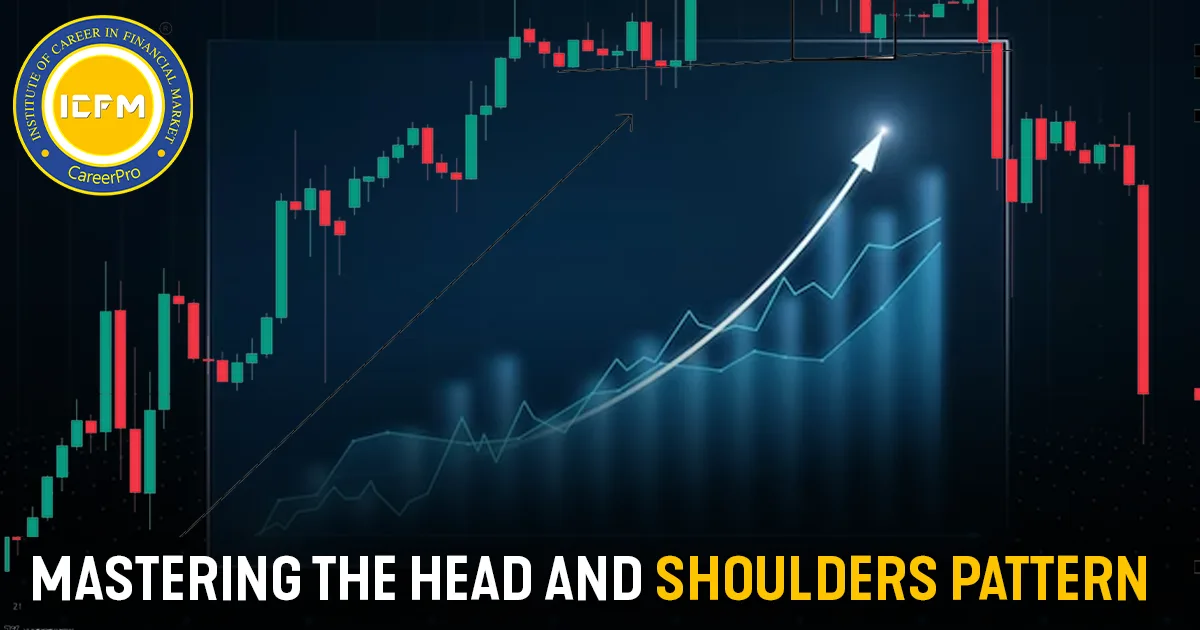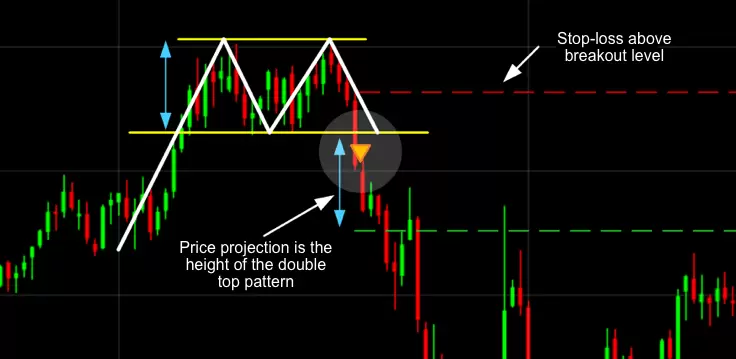Head and Shoulders
The head and shoulders pattern can be either head and shoulders, top or head and shoulders bottom. The Maps are a picture of a head and shoulders movement, which portrays three consecutive rallies and responses with the alternate bone making the loftiest/ smallest point.
1. Head and Shoulders( Top reversal):
A Head and Shoulders( Top) is a reversal pattern, which follows an extended uptrend forms and its completion marks a trend reversal. The pattern contains three consecutive peaks with the middle peak( head) being the loftiest and the two outside peaks( shoulders) being low and roughly equal. The response lows of each peak can be connected to form support or a neckline. As its name would suggest, the head and shoulders reversal pattern is made up of a left shoulder, head, right shoulder, and neckline. Other corridors that are part of the pattern are volume, the 54 route, price target and support turned resistance. Let's take a look at each part collectively, and also put them together with some exemplifications. 1. former trend This has to be a reversal pattern, so there must have been an uptrend that was ahead; otherwise, there can not be a head and shoulders reversal pattern, or any reversal pattern for that matter.
2. Left shoulder:
It's a peak that marks the high point of the present trend in an uptrend. It's formed generally at the end of an expansive advance during which volume is relatively heavy. At the end of the left shoulder there's generally a dip or recession which generally occurs on low volume.
3. Head:
A rise from the low of the left shoulder thresholds, which is lesser than the former high and is the head. At this point, to follow proper form, prices must decline to nearly near the low of the left shoulder – lower maybe or advanced but in any case, below the top of the left shoulder.
4. Right shoulder:
This is developed when the low of the head again advances. The peak of the right shoulder is nearly equal in height to that of the left shoulder but lower than the head. As an ideal, harmony is the case, but occasionally the shoulders can be out of fettle. The decline from the right shoulder peak must break the neckline.
5. Neckline:
A neckline can be drawn connecting the bottoms of the left shoulder, the head, and the right shoulder. A breakdown of this neckline on a break lower from the right shoulder is the final evidence that terminates the head-and-shoulder pattern
6. Volume:
This head-and-shoulder pattern is also verified by volume conditions as the pattern takes place. Volume can also be measured as an index( OBV, Chaikin Money Flow) or simply looking at volume situations. immaculately, but not always, volume during the advance of the left shoulder should be greater than during the advance of the head. These drops in volume along with new highs that form the head are a warning sign. The coming warning sign comes when volume increases on the decline from the peak of the head. Final evidence comes when volume further increases during the decline of the right shoulder.
7. Neckline break:
The head and shoulders pattern is said to be complete only when the neckline support is broken. immaculately, this should also do in a satisfying manner with an expansion in volume.
8. Support becomes resistance:
Once support is broken, it frequently becomes resistance. occasionally, but not always, the price will come back to the break of support and give a alternate occasion to vend.
9. Target Price:
Once the neckline support breaks, the price drop distance is determined to be measured down from the neckline to the apex head. Target Price is arrived by 55 minus the distance from the apex down to the neckline. Any kind of target price should allow some form of estimation and among other effects former support position has to be taken under consideration.
Important Points that have to be flashed back :
- Head and shoulders pattern- this is one of the most common reversal conformations. It comes after an uptrend and generally marks a significant trend reversal once it's completed.
- The left and right shoulders should be immaculately equal in range. Still, they don't have to be. They can have varying extents and heights.
- Volume support and neckline support identification are considered to be the most critical factors. Support break indicates a new readiness to vend at lower prices. There's an increase in force combined with lower prices and adding volume. occasionally it's murderous, and one noway gets an alternate chance to return to the support break.
- Measuring the anticipated decline length after rout is useful but clearly not inescapably a target, as many times other effects in the specialized picture come into play in the timeframe that the pattern is moving through.









